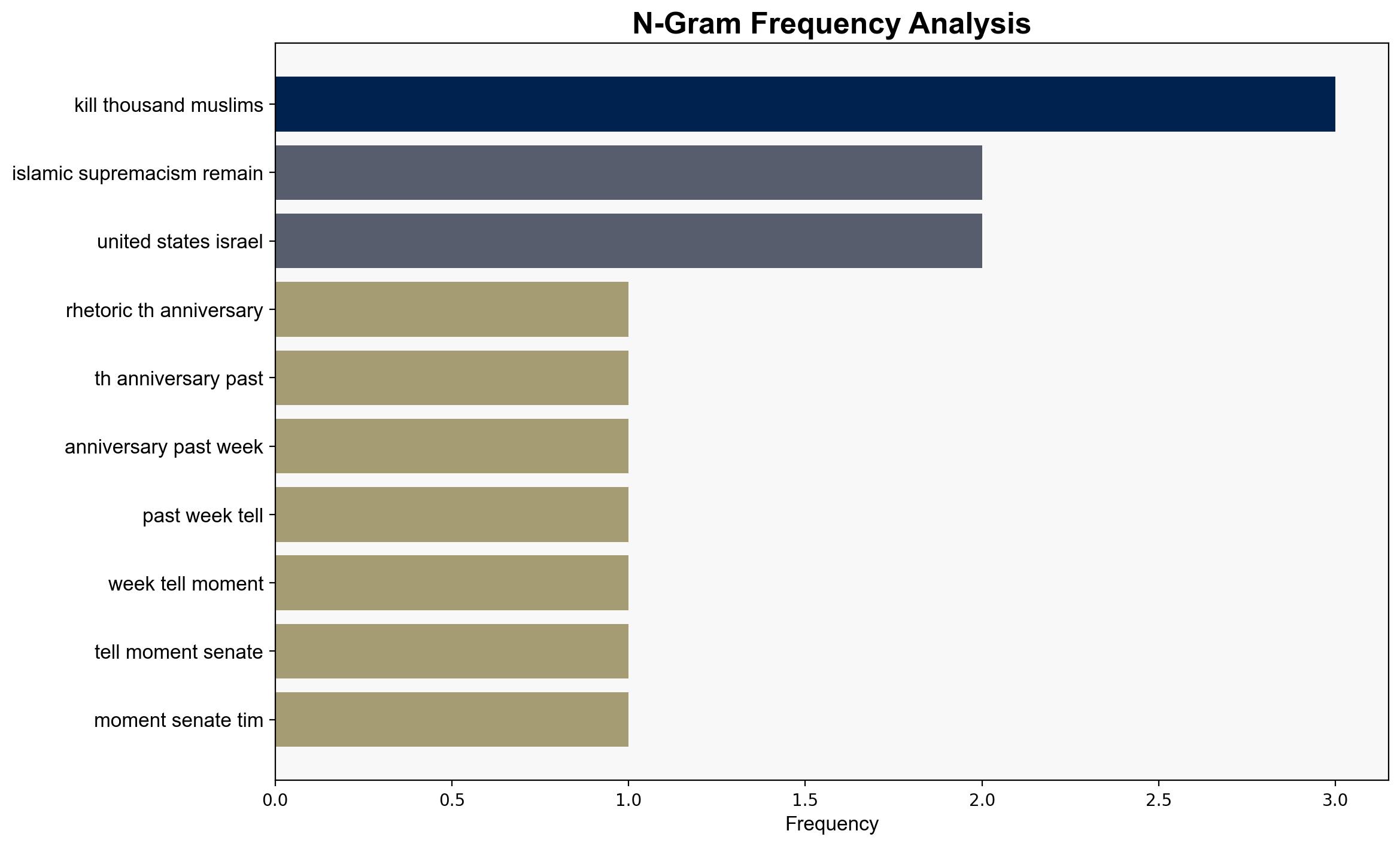The Rhetoric of 911 on the 24th Anniversary – Americanthinker.com
Published on: 2025-09-11
Intelligence Report: The Rhetoric of 911 on the 24th Anniversary – Americanthinker.com
1. BLUF (Bottom Line Up Front)
The analysis suggests that the rhetoric surrounding the 24th anniversary of 9/11 reflects ongoing tensions between Western and Islamic ideologies, with a particular focus on the threat of Islamic supremacism. The most supported hypothesis is that the discourse aims to highlight perceived threats from Islamic extremism while downplaying other forms of nationalism. Confidence in this assessment is moderate due to potential biases in the source material. Recommended action includes fostering balanced public discourse and enhancing counter-terrorism strategies that address all forms of extremism.
2. Competing Hypotheses
1. **Hypothesis A**: The rhetoric is primarily intended to underscore the threat of Islamic supremacism and its global impact, suggesting a need for heightened vigilance and action against Islamic extremist groups.
2. **Hypothesis B**: The rhetoric serves as a political tool to divert attention from other forms of nationalism and extremism, potentially exaggerating the threat of Islamic supremacism to influence public opinion and policy.
Using ACH 2.0, Hypothesis A is better supported by the source text, which emphasizes Islamic supremacism as a primary threat, citing specific examples and historical context. Hypothesis B lacks direct evidence in the text but remains plausible given the potential for political motivations.
3. Key Assumptions and Red Flags
– **Assumptions**: The analysis assumes the source text accurately represents the threat landscape and that the examples provided are indicative of broader trends.
– **Red Flags**: The potential bias of the source, which may prioritize certain threats over others, and the lack of balanced representation of other forms of extremism.
– **Blind Spots**: Limited consideration of non-Islamic extremist threats and the potential for overgeneralization of Islamic communities.
4. Implications and Strategic Risks
The focus on Islamic supremacism could lead to increased polarization and stigmatization of Muslim communities, potentially fueling further radicalization. Ignoring other forms of extremism may leave gaps in national security. The geopolitical implications include strained relations with predominantly Muslim countries and challenges in international counter-terrorism cooperation.
5. Recommendations and Outlook
- Enhance public discourse to include diverse perspectives on extremism, ensuring balanced coverage of all threats.
- Strengthen counter-terrorism strategies to address both Islamic and non-Islamic forms of extremism.
- Scenario-based projections:
- **Best Case**: Balanced discourse leads to comprehensive security strategies, reducing extremism across all fronts.
- **Worst Case**: Continued focus on Islamic extremism exacerbates social tensions and neglects other threats.
- **Most Likely**: Incremental improvements in discourse and strategy, with ongoing challenges in addressing all forms of extremism.
6. Key Individuals and Entities
– Tim Kaine
– Ted Cruz
– Thomas Jefferson (historical reference)
– Barack Obama
– Islamic extremist groups (e.g., Taliban, Hamas, Al-Qaeda)
7. Thematic Tags
national security threats, cybersecurity, counter-terrorism, regional focus





